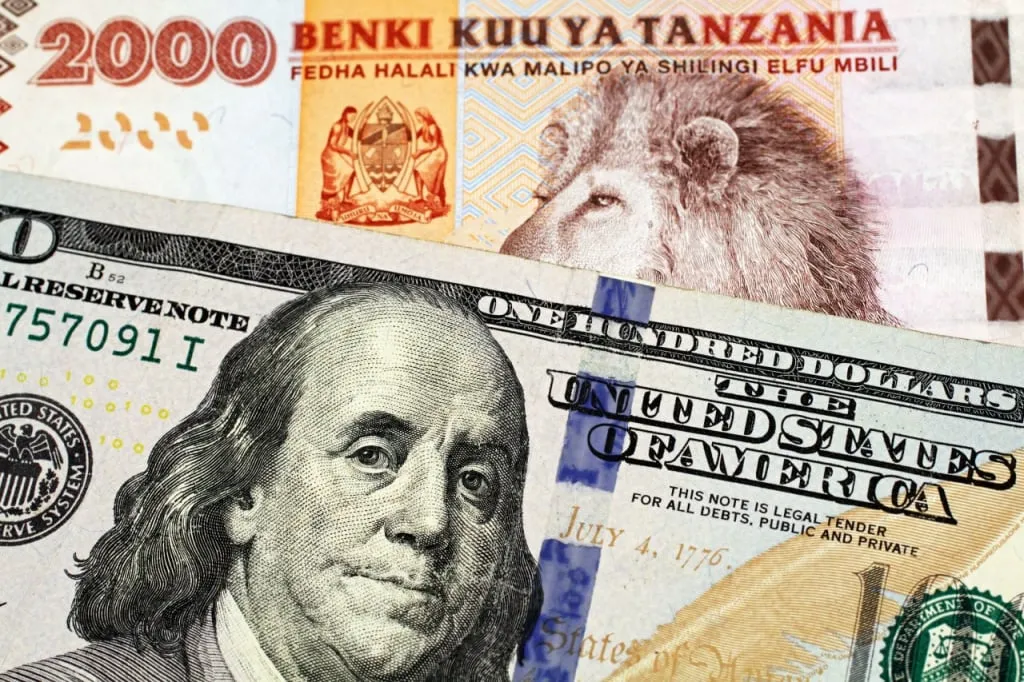Foreign Exchange Market in Tanzania
The foreign exchange market in Tanzania is integral to the country's monetary policy and economic stability:
Foreign Exchange Operations
- Bank of Tanzania's Interventions: The Bank of Tanzania actively intervenes in the interbank foreign exchange market (IFEM) to manage liquidity and stabilize the exchange rate. In the second quarter of 2024, the Bank of Tanzania sold USD 185 million to the market, compared to USD 131.5 million in the previous quarter.
Exchange Rate Movements
- Mainland Tanzania:
- Depreciation: The Tanzania Shilling (TZS) depreciated by 2.2% against the US Dollar in the second quarter of 2024, which was a faster rate than the 1.8% depreciation in the first quarter.
- Quarterly Average: The average exchange rate in the IFEM was TZS 2,375.5 per USD in June 2024, up from TZS 2,330.7 per USD in March 2024.
- Zanzibar:
- Exchange Rate: The exchange rate also showed depreciation similar to the mainland, reflecting overall market trends and pressures.
Foreign Exchange Reserves
- Adequacy: Foreign exchange reserves remained adequate, standing at USD 5,239.3 million at the end of June 2024. This level of reserves covers more than 4.5 months of projected imports of goods and services, thus providing a buffer against external shocks.
Foreign Exchange Inflows and Outflows
- Tourism and Exports: Inflows increased from tourism, traditional exports like coffee and cashew nuts, and mineral exports, particularly gold.
- Outflows: Major outflows were due to the importation of goods and services necessary for economic activities.
Current Account Balance
- Deficit:
- Mainland Tanzania: The current account deficit narrowed to USD 959.2 million in the quarter ending June 2024, compared to USD 977.8 million in the corresponding quarter in 2023.
- Surplus:
- Zanzibar: The current account surplus increased to USD 421.5 million in the year ending June 2024, from USD 411.5 million in the corresponding period in 2023.
Regulatory and Market Developments
- Market Reforms: The Bank of Tanzania is continuously implementing reforms to enhance the efficiency and transparency of the foreign exchange market. This includes measures to improve the regulatory framework and increase market liquidity.
The foreign exchange market in Tanzania plays a crucial role in maintaining economic stability. The Bank of Tanzania's interventions, adequate foreign exchange reserves, and continuous market reforms help manage the exchange rate and support the country's economic objectives.
Indicators of Economic Development
The foreign exchange market's performance, as reflected in these indicators, tells a positive story about Tanzania's economic development. While managing currency depreciation remains a challenge, the adequate foreign exchange reserves, increased inflows from key sectors, improved current account balance, and proactive regulatory reforms all point towards a stable and growing economy. These factors contribute to an environment conducive to sustainable economic development, attracting foreign investment, and enhancing the overall economic health of the country.
- Currency Depreciation:
- Depreciation Rate: The Tanzania Shilling (TZS) depreciated by 2.2% in the second quarter of 2024, compared to a 1.8% depreciation in the first quarter.
- Impact: While depreciation can indicate economic challenges, it can also make exports cheaper and more competitive internationally. This mixed effect needs to be balanced carefully by the Bank of Tanzania to avoid inflationary pressures while promoting exports.
- Foreign Exchange Reserves:
- Reserves Adequacy: Foreign exchange reserves stood at USD 5,239.3 million, covering more than 4.5 months of imports.
- Economic Stability: Adequate reserves signify economic stability and the ability to withstand external shocks. It also reflects prudent economic management and a buffer for future uncertainties.
- Tourism and Export Inflows:
- Increased Inflows: Significant inflows from tourism and traditional exports (like coffee and cashew nuts) and mineral exports (especially gold).
- Economic Growth: These inflows are critical for foreign currency earnings, supporting the balance of payments and promoting sectors like agriculture, mining, and tourism, which are pivotal for economic development.
- Current Account Balance:
- Mainland Tanzania: The current account deficit narrowed to USD 959.2 million, indicating an improvement in the trade balance.
- Zanzibar: The current account surplus increased to USD 421.5 million, highlighting positive economic activity and better trade performance.
- Trade and Investment: These figures suggest an improving trade environment, attracting investment, and enhancing economic growth prospects.
- Bank of Tanzania's Interventions:
- Market Stability: Selling USD 185 million to stabilize the market shows active management of the foreign exchange environment.
- Confidence: Such interventions help in maintaining market confidence and ensuring liquidity, essential for economic stability and growth.
- Regulatory Reforms:
- Market Efficiency: Continuous reforms aimed at enhancing the regulatory framework and improving market liquidity are indicative of a proactive approach to fostering a robust economic environment.
- Economic Development: Effective regulatory frameworks encourage investment, enhance transparency, and contribute to a more resilient and dynamic economy.
